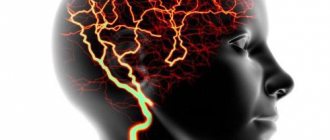What are somatic disorders and related disorders?
Somatic disorder and related disorders is the umbrella name for a group of disorders in which the physical pain and symptoms experienced by a person are due to psychological factors. These symptoms may be associated with some physiological cause, but when tested, the results either turn out to be completely normal or do not explain the symptoms that appear.
Often, to rule out other diseases, people with a somatic disorder have to undergo various tests and undergo various procedures many times. Since all this time they do not understand the reasons for their poor health, this can lead to unnecessary worries about their health. Symptoms of physical disorders are similar to those of many other diseases and can last for years. It is important to understand that people suffering from them do not invent symptoms out of the blue. The pain they experience is very real.
Symptoms
The somatized form of the pathological process is characterized by the following symptoms:
- loss of vision;
- hearing loss;
- loss of smell;
- lack of sensitivity in a certain part of the body;
- coordination defects;
- complete or partial loss of the ability to move.
Hypochondriacal types of the disease have the following clinical picture:
- tingling sensation throughout the body, goosebumps;
- pain;
- feeling of complete physical distress.
More often, the clinical picture involves problems with the gastrointestinal tract and cardiovascular system. The patient implies the presence of an additional problem in addition to the main disease.
Symptoms of somatoform disorder are different, depending on the type of disease: With somatization disorders, the following signs are present:
- pain moving throughout the body;
- bloating;
- constant feeling of fatigue;
- cough;
- problems with the gastrointestinal tract;
- disorders of the genitourinary system.
Typically, patients combine symptoms with the presence of diseases of certain organs or organ systems, which is not confirmed during diagnosis.
Chronic somatoform pain disorder has a single symptom: pain. Painful sensations are debilitating, excruciating, appear spontaneously, and the patient is characterized by the presence of pathology of any organ.
Undifferentiated somatoform disorder is characterized by the presence of various complaints from patients.
Symptoms
There are several types of somatic disorder and related disorders.
Somatization disorder
usually accompanied by pain and severe neurological symptoms (headache, fatigue). Other symptoms include:
- Digestive system disorders (nausea, vomiting, abdominal pain, constipation, diarrhea).
- Disorders of the genitourinary system (pain during sexual intercourse, loss of sexual desire and extremely painful menstruation in women).
Hypochondria
A condition in which a person believes that normal body reactions (such as a rumbling stomach) or the slightest manifestations of discomfort (for example, a mild headache) are symptoms of serious illness. To a person suffering from hypochondria, a rumbling stomach may seem like a sign of stomach cancer, or a headache might seem like a sign of a brain tumor.
Body dysmorphic disorder
This is a person’s obsession with some flaw in his appearance, and we are talking about either an almost invisible or non-existent flaw. He constantly worries about this far-fetched flaw, which can be located on any part of the body. The most common objects of concern in body dysmorphic disorder include:
- wrinkles
- hair loss
- excess weight gain
- size and shape of eyes, nose and chest.
Conversion disorder
This is the appearance of physiological symptoms similar to a neurological disorder in the actual absence of one. The most common ones include:
- paralysis of arms and legs
- vision loss
- hearing loss
- convulsions.
Stress makes symptoms worse.
Buy online
The current stage of development of medicine is characterized by an integrative approach, according to which somatic and psychosocial factors are taken into account in the development and course of many diseases [6], which determines the tendency towards the disappearance of artificial demarcation between somatic and mental diseases.
Depression, as a striking example of a disorder that combines mental and somatic components in different proportions, is becoming an increasingly common disorder that is not always diagnosed in a timely manner [18]. According to the literature [8], in more than half of patients with depression, signs of autonomic instability, sleep disorders, anergy, headaches, and tiredness in the morning are detected at the prodromal stage and are noted during the period of manifestation, stabilization and reverse development of depressive symptoms. The relative specificity of somatovegetative changes for each stage of depression has been revealed [3]. Somatovegetative disorders in some cases can play a leading role in the patient’s complaints (masked depression), in others they correspond to the severity of affective, ideational and motor disorders [2, 7, 11, 13, 14, 19].
The under-detection of depressive disorders is due to a number of factors. We are talking primarily about the low awareness of the population about the manifestations of depression. This leads to the fact that patients perceive depressive symptoms themselves as a natural reaction to somatic ill-being and therefore rarely complain of a depressed or anxious mood, or a decrease in the ability to experience pleasure. According to the literature, from 50 to 80% of patients suffering from depression turn to doctors at a general clinic, and only from 10 to 20% of them come to the attention of psychiatrists.
For depression masked by somatovegetative disorders, from ⅓ to ⅔ of patients are seen by general practitioners [16]. Internists who are not focused on actively identifying depression, as a rule, do not pay enough attention to the mental state of patients and classify somatovegetative symptoms as manifestations of somatic pathology. This leads to long-term somatically oriented and ineffective therapy, resulting in a chronic course with a decrease in the level of socio-psychological functioning and quality of life of patients.
Another equally significant problem is the insufficient attention of psychiatrists to the somatovegetative manifestations of depression. Meanwhile, somatovegetative disorders can occur not only at the active stage of the disease, but persist at the stage of reverse development and the formation of drug remission. In cases where they are not recorded by a doctor, the likelihood of relapse increases.
Somatovegetative manifestations of depression include disorders of sleep, libido, appetite and changes in body weight, anergy, bodily sensations (including algia) and functional disorders of various body systems [1, 9, 10, 12, 15, 17].
Depressive affect is a complex structure that includes 3 main components: melancholy, anxiety, apathy, which have varying degrees of severity at different stages of the disease, are in dynamic relationships with each other and determine the structure of the syndrome. The feasibility of differentiating endogenomorphic depressions based on the type of leading affect is determined by its syndrome-forming role. The leading affect determines the nature, severity and localization of somatopsychic sensations, the nature of changes and severity of sexual disorders, somatic manifestations in somatized depression, variants of sleep disorders and the degree of their severity [5]. Therefore, identifying the predominant affect is important for assessing the patient’s condition and choosing therapy.
The above determines the relevance and necessity of analyzing the connection between certain somatovegetative disorders and the type of depression.
The purpose of the study is to establish the relationship between the structure of somatovegetative disorders and the type of depressive affect.
Material and methods
Between 2007 and 2009, 102 patients with depression, 28 (27.5%) men and 74 (72.5%) women, aged 20 to 50 years, were examined. Among them were 69 people who received inpatient treatment at the Moscow Research Institute of Psychiatry, and 33 who were observed in a general somatic clinic in Moscow. The average age of men was 41.9 years, women - 37.8 years. A significant part of the observations were persons with higher education (39.3% of men and 44.6% of women); 60.7% of men and 59.5% of women had a family (were married or married).
Patients with schizophrenia, chronic alcoholism and drug addiction, mental disorders associated with organic damage to the central nervous system, and chronic somatic diseases in the acute stage were excluded from the study.
The condition of all patients met the criteria of the section “Affective disorders” according to ICD-10 and it corresponded to the heading F 31.3 in 12 (12%) people, F 32.0 in 11 (11%), F 32.1 in 13 (13%), F 33.0 in 12 (12%), F 33.1 in 54 (53%). Depression of moderate severity was noted in 79 (77%) cases, mild - in 23 (23%) patients. The average duration of the disease was 6.5 years (from 2 weeks to 29 years). The duration of the disease was up to 1 year in 18 (19%) people, from 1 to 5 years in 45 (44%), over 5 years in 38 (37%). The average duration of depression is 4.3 months (from 2 weeks to 24 months). Clinical and demographic characteristics of patients are presented in Table. 1.
When analyzing the psychopathological structure of depression, we used a clinical chart developed at the Department of Affective Pathology of the Moscow Research Institute of Psychiatry. To identify and evaluate somatovegetative disorders, the criteria proposed by A.M. were used. Wayne [4], and the Kerdo index[]. Violations of the body's homeostatic capabilities were judged on the basis of indicators of autonomic tone and reactivity (Danyini-Aschner test), and adaptation mechanisms were judged on the basis of indicators of autonomic support of activity (orthostatic test). Methods for assessing somatovegetative disorders were selected so that psychiatrists, psychotherapists and internists could easily qualify them without resorting to special, hard-to-find diagnostic tools. Additionally, the 21-item Hamilton Depression Rating Scale was used.
Statistical methods included: comparison of two independent samples (Mann-Whitney test), comparison of two dependent samples (Wilcoxon test), Spearman rank correlation method. Statistical operations were performed using the SPSS 14 software package.
results
In accordance with the purpose of the study, the subjects were divided into 3 groups according to the type of leading affect: with dominance of anxious affect - 48 (47%) people, dominance of sad affect - 38 (37.3%), dominance of apathy - 16 (15.7%) .
Group with dominance of anxious affect
, as mentioned above, were 48 patients: 11 (22.9%) men and 37 (77.1%) women. Their average age was 39±3.55 years. 35 patients were diagnosed with recurrent depressive disorder, 9 with a depressive episode, 4 with bipolar affective disorder, a current episode of mild or moderate depression. The mean total Hamilton Depression Inventory score at admission was 18.6.
According to the data in Table. 2 somatovegetative disorders that significantly correlate with the affect of anxiety are presented in the following order by prevalence:
decreased libido (69%), difficulty falling asleep (58%), decreased appetite (52%), palpitations (50%), tachycardia (48%), muscle tension (46%), increased blood pressure (46%) , both systolic (SBP) and diastolic (DBP), feeling of shortness of breath (40%), burning sensation in the chest (33%), anergy (31%), dry mouth (31%), increased sweating (29% ), diarrhea (23%), nausea (21%). Close to a significant level correlated with the severity of anxious affect: waking up in the middle of the night (42%), abdominal pain (31%), feeling of interruptions in the heart (29%), headache (23%), muscle pain (21%).
According to the table. 3, in 56.25% of patients the Kerdo vegetative index was positive, in 22.92% it was negative, in 21.3% it was close to zero.
Indicators of the Danini-Aschner test significantly negatively correlated with the severity of anxiety (r = –0.352; p = 0.014), reflecting a decrease in autonomic reactivity parallel to the deepening of the leading affect. 24 patients had decreased autonomic reactivity, 4 had perverted reactivity, 14 had normal reactivity, and 6 had increased reactivity. In 28 patients, this test indicates a decreased reactivity of the parasympathetic component with increased activity of the sympathetic one. In 14 patients, the reflex response of the parasympathetic part of the central nervous system was within normal values. The results of the orthostatic test reflect an increase in the activity of the sympathetic department in 22 (46%) patients, the parasympathetic - in 9 (19%). A normal response was demonstrated by 17 (35%) patients.
During statistical analysis, it was possible to detect the following intragroup correlations of the studied characteristics. A highly significant correlation was revealed between the severity of diarrhea and abdominal pain (r=0.779; p<0.001). Muscle tension was significantly positively correlated with the severity of anxious affect (r=0.336; p=0.020), headache (r=0.319; p=0.027), muscle pain (r=0.688; p<0.001) and anergy (r=0.698; p< 0.001). A significant positive relationship was established between age and anergy indicators (r=0.356; p=0.013). Increases in SBP (r=0.303; p=0.036) and DBP (r=0.319; p=0.027) were significantly correlated with increasing age. There was a tendency towards an increase in the severity of tachycardia (r=0.283; p=0.051) and a decrease in libido (r=0.278; p=0.056) in parallel with increasing age. Sensations of burning behind the sternum, rapid heartbeat and lack of air have a statistically significant connection with hypochondriacal symptoms (“increased attention to bodily sensations”, “concern about the state of one’s health”). The feeling of a racing heart did not show a statistically significant relationship with an increase in heart rate - heart rate (r=0.256; p=0.079). Analysis of gender differences in somatovegetative disorders using the Mann-Whitney test revealed a tendency towards a greater prevalence of headache and hypochondriacal fixation in women.
A group with a leading melancholy affect
There were 38 patients: 12 (31.6%) men and 26 (68.4%) women. Their average age was 38±4.48 years. 22 (57.9%) patients were diagnosed with recurrent depressive disorder; 10 (26.3%) had a depressive episode of mild to moderate severity; 6 (15.8%) had bipolar affective disorder, a current episode of mild or moderate depression. The mean total Hamilton Depression Scale score at presentation was 17.3.
According to the table. 4, the following somatovegetative disorders were significantly correlated with the affect of melancholy:
decreased libido (89%), decreased appetite (58%), anergy (50%), final early awakenings (47%), feeling of heaviness in the chest (47%), increased systolic blood pressure (44%), increased diastolic blood pressure (37 %), tachycardia (34%), constipation (26%), dry mouth (24%).
In 19 (50%) patients, the Kerdo index had a positive value, in 5 (13.2%) it was negative, in 11 (28.9%) it was close to 0 (Table 5).
Based on the calculation of the vegetative index, we can talk about a significant predominance of sympathetic influences on the activity of the cardiovascular system over parasympathetic ones. As in the previous group, the indicators of autonomic reactivity statistically significantly (r = –0.340; p = 0.037) reflected its decrease parallel to the deepening of the melancholy affect, which indicates an increase in sympathicotonic influences. 18 patients had reduced autonomic reactivity, 5 had perverted reactivity, 11 had normal reactivity, and 4 had increased reactivity. Autonomic support of activity in 19 (50%) patients reflected hyperactivity of the sympathetic regulation link, in 6 (16%) - parasympathetic, in 13 (34%) - there was an increase in heart rate within normal values.
In the group with the dominance of melancholy affect, some age and gender characteristics are noted. Thus, the relationship between the age of patients and anergy, increased blood pressure and decreased libido is close to significant. Women showed greater severity of anergy.
A group dominated by apathy
There were 16 patients: 5 (31.25%) men and 11 (68.75%) women. Average age 39±6.39 years. The condition of 9 (56.25%) patients was assessed as recurrent depressive disorder, 5 (31.25%) - depressive episode, 2 (12.5%) - bipolar affective disorder, current episode of mild or moderate depression. The mean total Hamilton Depression Inventory score at presentation was 15.06.
According to the table. 6, decreased libido (100%), decreased appetite (75%), final late awakenings (62.5%), and feelings of relaxation throughout the body (31.25%) were significantly correlated with apathy.
Calculation of the Kerdo vegetative index indicated a predominance of eutonia in 9 (56.25%) patients, parasympathicotonia in 6 (37.5%), sympathicotonia in 1 (6.25%).
Normal autonomic reactivity was observed in 13 (81.25%) patients, increased - in 2 (12.5%), decreased - in 1 (6.25%). Analysis of autonomic support of activity indicated the absence of predominance of regulatory influences of the sympathetic or parasympathetic departments in 13 (81.25%) patients, with a slight representation of parasympathetic hyperactivation in 3 (18.75%).
The use of nonparametric statistical methods for independent samples made it possible to identify some intergroup differences in the incidence of somatovegetative disorders. In the group with a predominance of anxious affect, compared to the group with a predominance of melancholy affect, the feeling of rapid heartbeat, a feeling of interruptions in the heart, a feeling of shortness of breath, diarrhea, abdominalgia, difficulty falling asleep and restless sleep during the night, muscle tension, muscle pain were statistically significantly more common (p<0.05). In the group with dominance of melancholy affect, compared with the group with dominance of anxious affect, final early awakening and constipation were more often found (p < 0.05). In the group with dominance of apathy, final late awakening was noted significantly more often in comparison with the first and second groups (p <0.05).
Statistical methods applied to the entire sample revealed the following features. A significant positive relationship was found between the total severity of somatovegetative disorders and age (p<0.05). In patients with anxious and hysterical traits, the total severity of somatovegetative disorders exceeded that in patients with other personality disorders (p<0.05). No significant differences were found in the structure of somatovegetative disorders with bi- and monopolar types of course. In polyclinic patients, hypochondriacal concern was greater than in hospital patients (p<0.05).
Discussion
The study suggests that somatovegetative disorders as a constant component of the depressive syndrome occur in all types of depression. However, the nature and severity of somatovegetative disorders are determined by the type of leading affect and correlate with the structure of depression as a whole. Somatovegetative disorders are most represented in anxious depressions, and least represented in apathetic states. Melancholy depressions occupy an intermediate position in this regard.
All types of depression are characterized by disturbances in sleep, appetite, and libido (sexual desire). Common somatovegetative disorders for anxious and melancholy depression include functional cardiovascular disorders, pain in the lower back and head, anergy, and dry mouth. Anxious depression is characterized by difficulty falling asleep, restless sleep, painful burning in the chest, sensations of rapid heartbeat and interruptions in heart function, a feeling of lack of air, increased sweating, muscle pain and tension, abdominal pain, nausea, diarrhea, combined with hypochondriacal ideas (preoccupation state of your physical health). Melancholy depression is characterized by final early awakenings, a feeling of heaviness, pressure in the chest, constipation, not accompanied by hypochondriacal thoughts. Apathy is characterized by late awakenings and feelings of relaxation throughout the body. Thus, in anxiety-type depressions, signs are revealed that are caused by activation of both the sympathetic and parasympathetic parts of the autonomic nervous system with a significant predominance of sympathicotonia; melancholy depression is characterized by sympathetic activation, expressed to a lesser extent than in anxious depression, and in apathetic depression there are signs of autonomic activation are not detected.
The use of the obtained data can allow internists, focused primarily on somatovegetative symptoms, to increase recognition and carry out typological differentiation of endogenomorphic depression, and psychiatrists to carry out treatment not limited to assessing psychopathological symptoms without taking into account the somatic component. These activities are designed to help reduce the frequency of relapses, chronicity, suicidal risk, disability of patients with depression, reduce economic losses and improve the quality of life of patients and their families.
[] The Kerdo index allows you to assess the state of the autonomic nervous system in relation to the predominance of sympathetic or parasympathetic regulation.
Causes and risk factors
No one knows for sure the reasons for the development of somatic disorder and related disorders. In some cases, there may be problems with the transmission of nerve impulses to the brain that are responsible for pain, tension and other unpleasant sensations. At the same time, it is known for certain that the pain and discomfort experienced by a person with a somatic disorder are quite real. He doesn't make them up.
Like many other diseases, physical illness and related disorders can be passed on genetically. In addition, they have a pronounced periodic character.
Somatoform dysfunction of the autonomic nervous system
The syndrome develops when there is a malfunction of the autonomic nervous system, which controls the functioning of internal organs, blood vessels, and is responsible for the course of physiological processes and the mobilization of the body as a whole.
The ANS consists of 2 sections: parasympathetic and sympathetic.
The sympathetic nervous system increases the heart rate, constricts blood vessels and increases blood pressure. Increases sweating and slows down intestinal motility. It relaxes the bladder, dilates the bronchi and pupil. Sympathy speeds up metabolism and activates the body as a whole.
The parasympathetic system has the opposite effect. But, despite the opposition of departments, normal well-being of a person is ensured by their coordinated work. Any malfunctions in the functioning of both systems cause various pathological sensations and syndromes, in particular, somatoform dysfunction.
There are 3 types of disorders:
- with a predominance of sympathy;
- with a predominance of parasympathetics;
- mixed.
According to the flow, stable and paroxysmal, with vascular and other types of crisis are distinguished.
Pathology can be primary, that is, it develops on its own, or secondary, after previous illnesses. Its symptoms manifest themselves under the influence of a psychotraumatic factor.
Such patients are characterized, first of all, by the appearance of vegetative signs: severe sweating, tremors of the limbs, paleness and redness of the skin.
Another group of signs expresses the dysfunction of internal organs under the control of the ANS:
- cough, shortness of breath, laryngeal spasm;
- tachycardia, arrhythmia, blood pressure changes. Heart pain does not have a clear localization and can be of various types. It happens that they are accompanied by a feeling of anxiety or fear. They are worse at rest, but go away during physical activity. Lasts from a few minutes to several days. Heart symptoms are so believable that they sometimes confuse even specialists;
- abdominal pain, bloating, difficulty swallowing; “bear disease” - diarrhea under the influence of stress;
- difficulty urinating, urinary incontinence;
- headaches, fatigue, poor sleep.
The complaints are numerous, but lack specifics. They signal a disruption in the functioning of several organs at once.
Patients are concerned about their condition, but still not to the same extent as hypochondriacs. They strive to find a way out of the situation and receive adequate treatment.
Living with a somatic disorder
Living with a medical disorder and related disorders can be challenging. Often a person faces distrust from other people. He may not understand what is happening to him and for what reasons. He may be irritated by his own body. To combat the symptoms, you need the help of a doctor. Fortunately, physical disorder and related disorders are easy to manage.
See your doctor regularly during the most important part of your treatment. The frequency of visits is determined by the doctor himself. If symptoms persist, people often become desperate, but you just need to be patient and trust your doctor to do his best to make your life easier.
Questions to ask your doctor
- If I am diagnosed with a physical disorder, does that mean that all my symptoms are of my own making?
- What is the likely cause of the disorder in my case?
- Which treatment option is optimal in my case? Do I even need treatment? Will I have to take medications?
- Can lifestyle changes, such as learning stress management techniques, help relieve symptoms?
- How often do you need to see a doctor?
(No Ratings Yet)
Loading…











